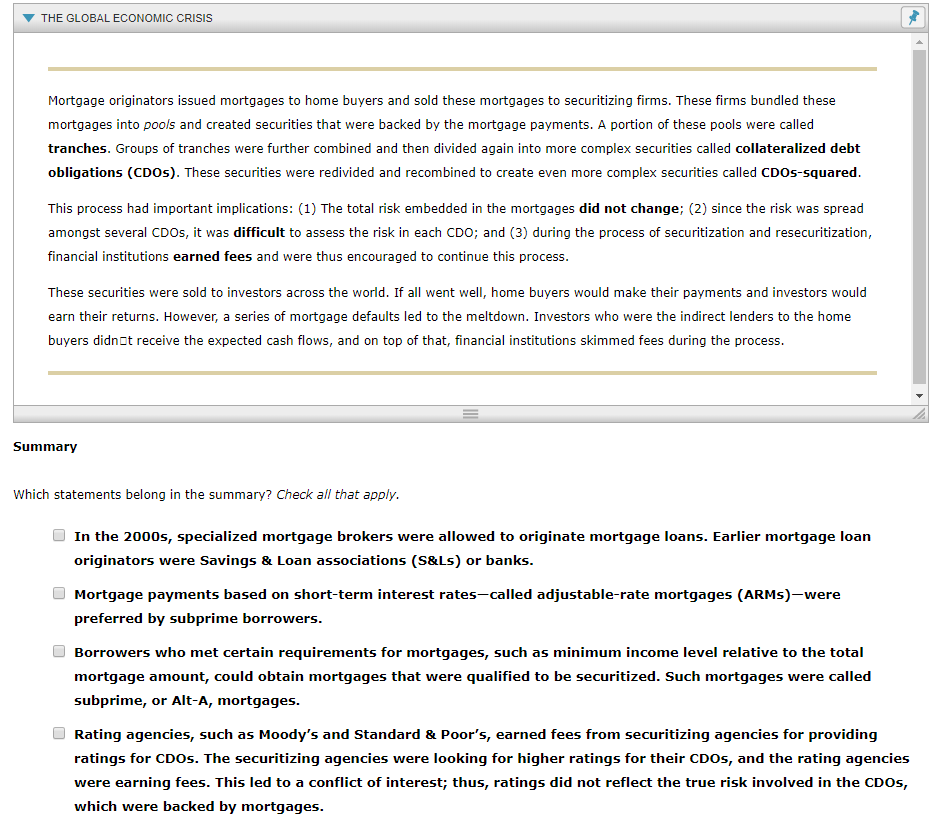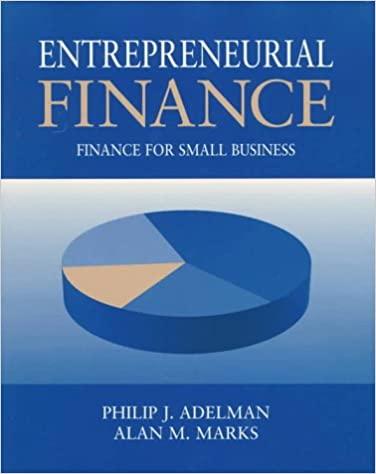Answered step by step
Verified Expert Solution
Question
1 Approved Answer
THE GLOBAL ECONOMIC CRISIS Mortgage originators issued mortgages to home buyers and sold these mortgages to securitizing firms. These firms bundled these mortgages into

THE GLOBAL ECONOMIC CRISIS Mortgage originators issued mortgages to home buyers and sold these mortgages to securitizing firms. These firms bundled these mortgages into pools and created securities that were backed by the mortgage payments. A portion of these pools were called tranches. Groups of tranches were further combined and then divided again into more complex securities called collateralized debt obligations (CDOs). These securities were redivided and recombined to create even more complex securities called CDOS-squared. This process had important implications: (1) The total risk embedded in the mortgages did not change; (2) since the risk was spread amongst several CDOS, it was difficult to assess the risk in each CDO; and (3) during the process of securitization and resecuritization, financial institutions earned fees and were thus encouraged to continue this process. These securities were sold to investors across the world. If all went well, home buyers would make their payments and investors would earn their returns. However, a series of mortgage defaults led to the meltdown. Investors who were the indirect lenders to the home buyers didnot receive the expected cash flows, and on top of that, financial institutions skimmed fees during the process. Summary = Which statements belong in the summary? Check all that apply. In the 2000s, specialized mortgage brokers were allowed to originate mortgage loans. Earlier mortgage loan originators were Savings & Loan associations (S&Ls) or banks. Mortgage payments based on short-term interest rates-called adjustable-rate mortgages (ARMS)-were preferred by subprime borrowers. Borrowers who met certain requirements for mortgages, such as minimum income level relative to the total mortgage amount, could obtain mortgages that were qualified to be securitized. Such mortgages were called subprime, or Alt-A, mortgages. Rating agencies, such as Moody's and Standard & Poor's, earned fees from securitizing agencies for providing ratings for CDOs. The securitizing agencies were looking for higher ratings for their CDOS, and the rating agencies were earning fees. This led to a conflict of interest; thus, ratings did not reflect the true risk involved in the CDOS, which were backed by mortgages.
Step by Step Solution
There are 3 Steps involved in it
Step: 1
Based on the provided passage about the global economic crisis lets analyze which statements belong in the summary Key points from the passage Mortgag...
Get Instant Access to Expert-Tailored Solutions
See step-by-step solutions with expert insights and AI powered tools for academic success
Step: 2

Step: 3

Ace Your Homework with AI
Get the answers you need in no time with our AI-driven, step-by-step assistance
Get Started


